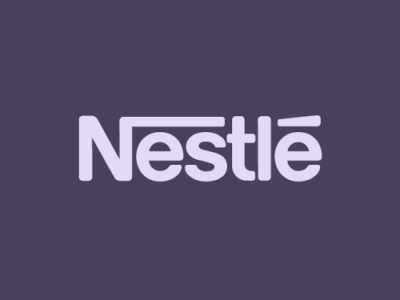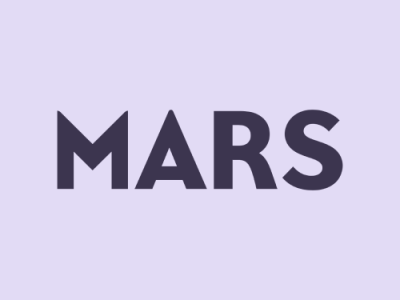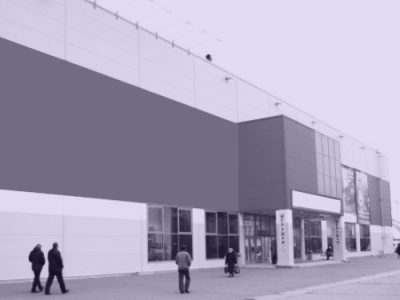What Is a Pricing Strategy and Why It Matters in Retail
Our Clients
Committing to the success of our clients around the world
In a fast-changing retail landscape, success depends not only on a wide assortment and efficient logistics, but also on a well-structured pricing strategy. A solid pricing strategy helps achieve several key objectives at once: secure profit margins, retain customers, and shape the desired brand image. In this article, we’ll break down the core principles of pricing strategy, explore five major pricing models, and show how Ailet’s technologies can optimize every stage of the process.
Understanding the Concept of Pricing Strategy in Data-Driven Retail
A pricing strategy is a set of rules and algorithms that determine how much customers pay—and what exactly they’re paying for. To build a robust strategy, retailers must consider three key components:
- Cost and margin: You must account for all direct and indirect costs (production, logistics, operations) to define a minimum viable price. Regular recalculation is essential as exchange rates, material prices, and rent change.
- Perceived value: Customers are willing to pay more when they see tangible benefits—fast service, warranties, unique design. Tools like surveys, focus groups, and review analysis help measure this value.
- Market conditions: A deep understanding of competition, seasonal demand, macroeconomic factors, and behavior trends is crucial. Dynamic pricing systems let retailers respond quickly to shifts in demand or competitors’ moves.
With the right tech, retailers can collect and analyze large datasets—from SKU-level sales to customer behavior online. Data analytics reveals hidden correlations between pricing and conversion, predicts ideal discount levels, and identifies the best time for promotions—turning pricing from guesswork into science.

5 Essential Pricing Strategies Every Retailer Should Know
Let’s explore five key pricing models that help retailers tailor their approach:
Cost-Plus Pricing
The cost-plus model calculates the minimum viable price based on total cost (production, logistics, operations) plus a fixed markup. It’s simple, transparent, and reduces the risk of selling below cost. However, frequent updates to cost structures are needed to maintain profitability.
Competitive Pricing
Competitive pricing compares your prices with those of rivals. You can position slightly above the market (for better quality/service), at market level (neutral stance), or below (to attract new buyers). Real-time competitor monitoring tools make this model more effective and responsive to aggressive promotions.
Skimming Pricing
For innovative or exclusive products, price skimming is often the best fit. Prices start high to target early adopters, helping recover R&D and marketing investments quickly. Prices are gradually lowered to reach price-sensitive buyers. Success depends on clear product lifecycle management and a strong brand identity.
Penetration Pricing
Penetration pricing means setting initial prices near cost to lower the entry barrier for consumers. The goal is rapid sales volume and market share before competitors react. Once awareness and volume are secured, prices are adjusted for profitability. This works well for elastic-demand categories or market expansion.
Value-Based Pricing
In value-based pricing, prices reflect the perceived benefit the customer gets—comfort, convenience, prestige, or long-term quality. This strategy requires deep knowledge of customer preferences, pain points, and motivations. With the right targeting, prices can exceed standard markups and boost brand positioning and profitability.
How to Choose the Right Pricing Strategy for Your Retail Business
The right model depends on your business goals:
- For rapid market share growth, go with penetration or competitive pricing.
- For maximizing profit from limited or innovative products, use price skimming.
- For long-term brand building and loyalty, rely on value-based pricing.
Once goals are clear, analyze:
- Costs: Identify all expenses and define your minimum price floor.
- Demand: Understand demand elasticity, seasonality, and trends.
- Competition: Compare pricing and service levels with competitors.
- Customer segments: Assess price sensitivity and motivation across buyer types.
Often, combining strategies across categories ensures balance between revenue growth and profit margin.
Best Practices: Creating a Smart Pricing Strategy with Ailet
A smart pricing strategy doesn’t start with assumptions — it starts with real-time, shelf-level data. Ailet combines AI-driven image recognition and advanced analytics to help CPG brands optimize every aspect of price execution, from in-store validation to competitor monitoring.
Here’s how to build a pricing strategy that delivers both agility and accuracy:
1. Automate Price Validation Across Stores
Manual price checks are slow, inconsistent, and prone to human error. With Ailet’s mobile app and shelf-scanning capabilities, field teams can verify prices instantly with 97% accuracy. This reduces financial losses from incorrect pricing and ensures promotions are executed as planned.
2. Monitor Competitor Pricing in Real Time
Stay ahead of the competition by using shelf photos to automatically detect price changes from other brands across retail partners. Ailet’s Price Monitoring tool allows you to track promotional trends, discounts, and seasonal tactics — giving your brand a tactical edge at the POS.
3. Connect Price Data to Category-Level Insights
Accurate shelf data fuels better decisions. Ailet enables category managers to analyze pricing performance alongside other critical KPIs like on-shelf availability (OSA), share of shelf, and planogram compliance — all in a single dashboard.
4. Empower Field Teams with Smart Tools
Ailet’s mobile and web platforms guide reps to collect actionable data and take corrective steps in real time. Whether identifying pricing errors or ensuring POSM compliance, your team becomes faster, more consistent, and more focused on high-impact execution.
5. Track KPIs That Actually Drive Sales
Don’t rely on outdated audits. Ailet helps brands monitor key pricing metrics that influence shopper behavior — like price positioning vs competitors, promo accuracy, and discount implementation. These insights translate into better shelf execution and measurable growth.
Global brands like Danone, Coca-Cola, and Perfetti Van Melle trust Ailet to transform how they manage pricing on the shelf — reducing costs, increasing accuracy, and gaining a real-time view of the market.
By turning shelf data into pricing strategy, Ailet helps you move faster, act smarter, and stay ahead of market shifts.

Achieving New Levels of Operational Efficiency with Ailet’s Price Monitoring
Instead of time-consuming manual price audits, Ailet offers:
- Instant scanning of all price tags in a store or department, with time and operator tracking.
- Automatic alerts on price mismatches or missing tags, with photo and comment support.
- A centralized dashboard that displays:
- Real-time price accuracy statistics
- Hot spots with error clusters
- Change history across the network
This transparency helps identify and resolve issues quickly, minimizing losses and lowering operating costs.
Plus, Ailet eases the workload for staff and accelerates core business processes—enabling smarter planning, stronger strategic control, and a more competitive retail presence.
Why a Pricing Strategy Is the Foundation of Scalable Retail Success
In a world of shifting consumer expectations and new market entrants, prices must stay flexible. Without a pricing strategy, businesses risk:
- Losing customers due to poor value perception
- Shrinking margins from excessive discounts
- Missing revenue due to rigid or delayed pricing responses
On the other hand, a data-backed pricing strategy enables:
- Quick adaptation to demand shifts and competitor actions
- Transparent pricing that builds consumer trust
- Cost savings through automation and reduced manual work
It also builds long-term customer relationships, improves forecasting, and minimizes seasonal dips.
Investing in a well-designed, tech-driven pricing strategy delivers long-term ROI and lays the foundation for sustainable growth, business scalability, and a strong competitive edge.
Contact us
Success Stories
 Allis
Allis
 Coca Cola
Coca Cola
 Perfetti Van Melle
Perfetti Van Melle
 Nestle
Nestle
 Danone
Danone
 Mars
Mars
 Tarweej
Tarweej
 TOP 3 Retail Chain
TOP 3 Retail Chain
 Global Retail Corporation
Global Retail Corporation
 World’s Leading Manufacturer
World’s Leading Manufacturer
 Global FMCG Brand
Global FMCG Brand
 Leading Food Manufacturer
Leading Food Manufacturer
 Global Food Manufacturer
Global Food Manufacturer
 Global Coffee Manufacturer
Global Coffee Manufacturer
 Major Spirits Producer
Major Spirits Producer
 Global Pharmaceutical Brand
Global Pharmaceutical Brand
 Leading Food Manufacturer
Leading Food Manufacturer
 Global FMCG Brand
Global FMCG Brand
 Leading Food Manufacturer
Leading Food Manufacturer
 Leading Spirits Producer
Leading Spirits Producer
 Major FMCG Brand
Major FMCG Brand
 Major Coffee & Tea Manufacturer
Major Coffee & Tea Manufacturer



















